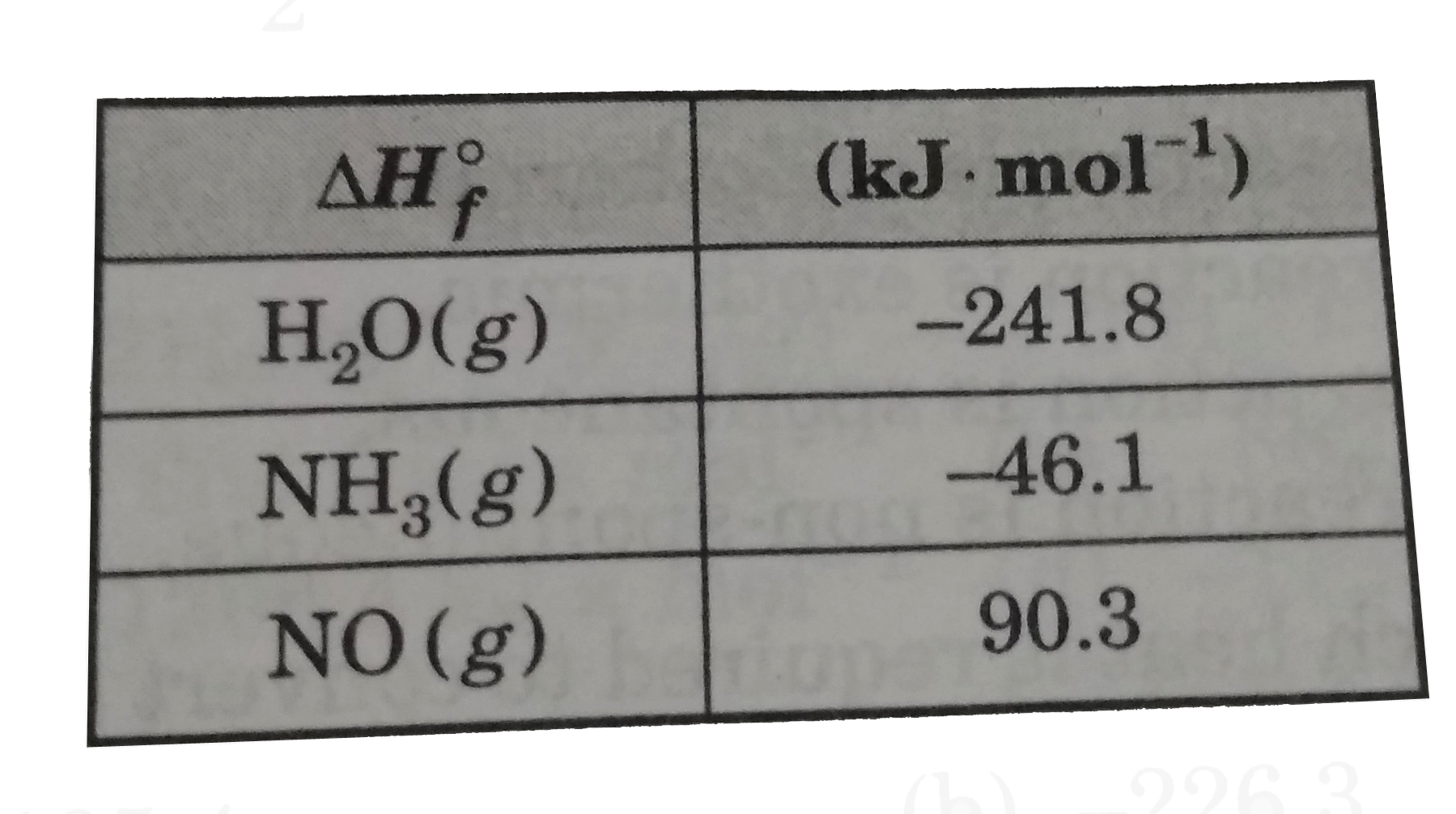If the reaction of 1.0 mol NH3(g) and 1.0 mol O2(g)4NH3(g)+5O2(g)→4NO(g)+6H2O(l) is carried to completion, then
all the O2(g) is produced
4.0 mol NO (g) is produced
1.5 mol H2O(l) is produced
all the NH3(g) is consumed
The correct Answer is:A
4NH3+5O2→4NO+6H2O
4 mol 5 mol
1 mol 54=1.25 mol
Since for 1 mol of NH3,1.25 mol of O2 required therefore O2 is the limiting factor (here O2 is only 1 mol) Hence all O2 will be consumed in reaching wiht 1 mol fo NH3
Topper's Solved these Questions
Similar Questions
Knowledge Check
what will be the change of entropy ΔrS∘at298K for the reaction in which urea is formed from NH3andCO2 ?
2NH3(g)+CO2(g)→NH2CONH2(aq)+H2O(l)
[given ,the standard entropy of NH2CONH2(aq) ,
CO2(g),NH3(g)andH2O(l)are174.0,213.7,192.3and69.9JK−1mol−1 respectively]A200JK−1mol−1B−35.44JK−1mol−1C−354.4JK−1mol−1D425.2JK−1mol−1In the reaction 4NH3+3O2(g)→2N2(g)+6H2O(g)
ANH3 acts as an oxidant and O2 acts as reductantBO2 acts as an oxidant as well as reductantCO2 acts as an oxidant and NH3 acts as reductantDNH3 acts as an oxidant and reductantDetermine ΔHrxn for the reaction in KJ .mol−1
2NH3(g)+52O2(g)→2NO(g)+3H2O(g).
 A−105.4B−226.3C−452.6D−6377.0
A−105.4B−226.3C−452.6D−6377.0
The reaction:
NH2CN(s)+32O2(g)→N2(g)+CO2(g)+H2O(l)
Was carried out in a bomb caloriemeter. The heat released was 743kJmol−1. The value of ΔH300K for this reaction would be
View SolutionName the type of reaction represented by the following equation :
4NH3(g)+5O2(g)→4NO(g)+6H2O(g)
View SolutionCalculate the entropy changes for the following reactions :
(i) 2CO(g)+O2(g)→2CO2(g)
(ii)2H2(g)+O2(g)→2H2O(l)
Entropies of different compounds are :
CO(g)=197.6JK−1mol−1,O2(g)=205.03JK−1mol−1
CO2(g)=213.6JK−1mol−1,H2(g)=130.6JK−1mol−1
H_(2)O(l)=69.96JK−1mol−1
View SolutionExpress the rate of following reaction in terms of different reactancts and products of 4NH3(g)+5O2(g)→4NO(g)+6H2O(g)
If the rate of formation of NO is 3.6×10−3molL−1s−1, calculate
(i) the rate of disappearance of NH3.
(ii) the rate of formation of H2O
View SolutionFor the given series of reaction,
4NH3(g)+5O2(g)→4NO(g)+6H2O(l)
2NO(g)+O2(g)→2NO(g)+O2(g)→2NO2(g)
To obtain maximum mass of NO2 from a given mass of a mixture of NH3 and O2 the ratio of mass of NH3 ot O2 should be:
View Solution